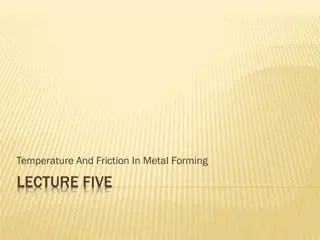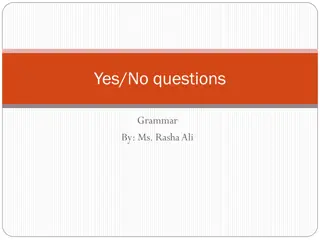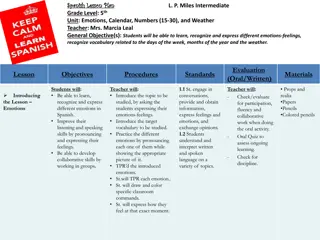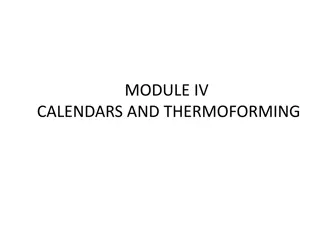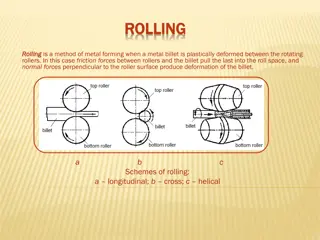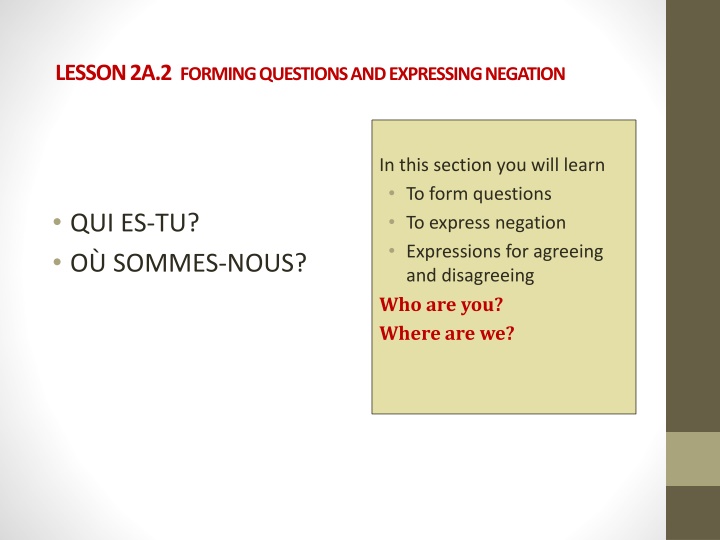
Forming Questions and Expressing Negation in French
Learn how to form questions, express negation, and engage in expressions for agreeing and disagreeing in French. Explore methods like using "est-ce que" and inversion for asking questions, as well as the structure of negative sentences with "ne...pas." Practice forming negative responses to questions provided in the content.
Download Presentation

Please find below an Image/Link to download the presentation.
The content on the website is provided AS IS for your information and personal use only. It may not be sold, licensed, or shared on other websites without obtaining consent from the author. If you encounter any issues during the download, it is possible that the publisher has removed the file from their server.
You are allowed to download the files provided on this website for personal or commercial use, subject to the condition that they are used lawfully. All files are the property of their respective owners.
The content on the website is provided AS IS for your information and personal use only. It may not be sold, licensed, or shared on other websites without obtaining consent from the author.
E N D
Presentation Transcript
LESSON 2A.2 FORMING QUESTIONS AND EXPRESSING NEGATION In this section you will learn To form questions To express negation Expressions for agreeing and disagreeing Who are you? Where are we? QUI ES-TU? O SOMMES-NOUS?
Asking questions Let s take a plain statement Pierre aime la musique (Pierre likes music) Different ways of asking: Does Pierre like music? -With est-ce que (does/do ? Est-ce que Pierre aime la musique? You just add Est-ce que to any statement: Est-ce que vous travaillez Boston? (Do you work in Boston?) This is the most common way of asking a written or oral question -Inversion: The verb first (used mostly in written documents, it s the most formal way of asking questions): Aime-Pierre la musique? / Travaillez-vous Boston? Aime-t-il la musique? (inversion and object pronoun. The -t- is placed there to avoid repeating a similar sound (The "e" in aime and the "i" in il are very similar)
expressing negation -Notice the structure of a negative sentence: NE (verb) PAS Margot ne travaille pas/ Vous n tudiez pas espagnol Je n aime pas tudier/ Ils n aiment pas chanter (As you can see, apostrophes are very common in French. Their main purpose is to avoid the repetition of the same or a similar sound. This is also the case with t-il/t-elle with names of people: (Marie,) aime-t-elle travailler? (Does Marie like to travel?) (Marie,) n aime-t-elle pas travailler? (Doesn't Marie like to travel?) -If you travel in France you will notice that people in colloquial, fast French, often shorten or omit the NE but never the PAS in a negative sentence: Je n travaille pas or simply Je travaille pas -However, it s always a good idea to include both words, Ne and PAS.
Negative practice Write negative answers to the following questions: 1. tudies-tu les sciences politiques?______________________________ 2. Cherches-tu le stylo?_________________________________________ 3. Aimes-tu le chocolat?________________________________________ 4. Est-ce que l examen est facile?________________________________ 5. Est-ce que tu aimes parler avec des amis?________________________ Answers: 1. Non, je n' tudie pas les sciences politiques 2. Non, je ne cherche pas le stylo 3. Non, je n'aime pas le chocolat 4. Non, l'examen n'est pas facile 5. Non, je n'aime pas parler avec des amis (I don t like to speak with friends) 2. CC-BY Roger celis





